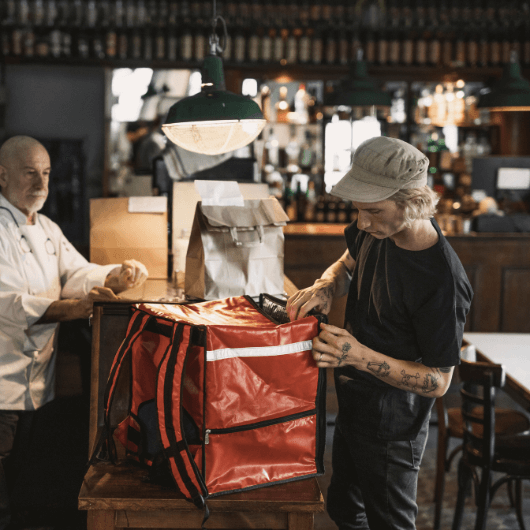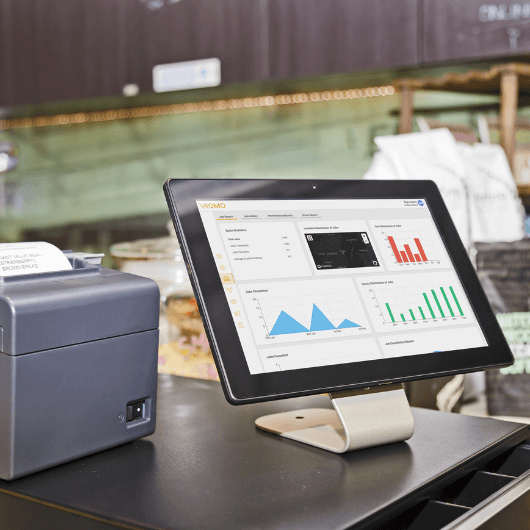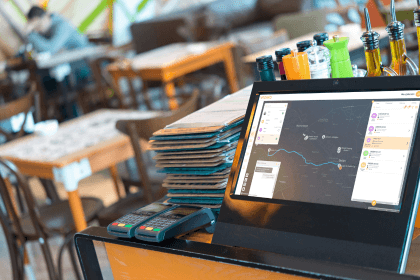
How to make restaurant food delivery profitable
January 4, 2023
Uncover the reasons behind the delivery service driver shortage, the challenges faced by restaurants, and the solutions needed to overcome them today!

Imagine a parallel universe where the concept of having your beloved takeaway delivered right to your doorstep simply didn’t exist.
In this world, on a leisurely Saturday night, when all you craved was to unwind in your cozy pajamas and relish The Office reruns, you found yourself compelled to venture outside and dine out in order to savor your favorite takeaway.
It seems almost inconceivable, doesn’t it?
Just like the way we once took dining out for granted before the pandemic turned our world upside down.
As the demand for restaurant delivery services continues to grow in the United States, a shortage of delivery service drivers has become a major challenge for businesses.
Restaurants are struggling to find enough reliable drivers to meet customer demand, and are feeling the impact of longer wait times and customer complaints.
In this article, we will look at the causes of the delivery driver shortage as well as the challenges faced by restaurants as a result.
We’ll also explore some solutions for restaurants that are looking to maintain that self-delivery model amid the delivery driver shortage, including utilizing 3rd party delivery driver services and implementing an online delivery management system.
As the demand for food delivery services reaches an all-time high, the shortage of delivery drivers becomes more apparent (even Domino’s Pizza is struggling guys).
There are several reasons why the driver shortage within the food delivery industry currently exists:
Consumer habits have dramatically changed since the pandemic, and delivery services have become a more convenient and safer option for customers.
People are preferring to dine at their homes instead of going out due to at-home convenience, avoiding crowds, and being able to save expenses on alcohol, taxis, and babysitters.
We can’t blame them what with the current cost of living crisis. Right?!

Another significant reason behind the delivery service driver shortage is that delivery service providers are typically paid a below-average salary.
In addition, they often don’t have a flexible schedule and are offered no real incentives to make their job more attractive. Of course, customer tips help, but they’re often not enough to keep a driver truly motivated longer-term.
This has led to a high turnover rate within the restaurant industry and a shortage of delivery driver services, making it challenging for restaurant businesses to maintain their self-delivery operations which has an obvious knock-on effect on end-user customer satisfaction levels.
Luckily enough, things are looking up in this department, for New Yorkers at least, with New York City deciding to raise delivery wages to $19.96 in 2025 according to Restaurant Dive.

Finding valid delivery service drivers for restaurants has become a difficult task.
We’ve all seen the Reddit threads about customers receiving delivery orders with pizza slices missing or their takeaway cups being completely empty.
In addition, many restaurants have reported struggling to find reliable drivers who have valid driver’s licenses and clean driving records, resulting in a decrease in the overall efficiency and quality of their delivery services.
If your restaurant struggles with this, why not try a delivery driver recruitment company like YouWrk that can help you find your next delivery driver superstar?

New technological advancements have made it easier for customers to order meals at their convenience, and have also created new opportunities for delivery service drivers.
However, with this influx of demand comes increased competition, which has impacted the restaurant industry massively when it comes to the driver shortage.
With countless companies, and the increase of Dark Kitchens vying for their services, drivers have the luxury of choosing between various companies based on factors like hourly wage and flexible schedules.
This means that restaurants need to be able to compete across multiple industries that often generate a lot more revenue than they do.
While there may be solutions you can implement to solve the above causes, they don’t come without a cost.
This shouldn’t and doesn’t have to be the case for restaurants.
Let’s take a look at the challenges faced by restaurants as a direct result of the driver shortage and how we can implement a solution that doesn’t cost us more time or money.

While we could dive into the endless pressing challenges that arise from a shortage of delivery drivers in the restaurant industry, for the sake of time we’ll concentrate on the key issues at hand.
We’ll also provide you with practical, actionable solutions that can be swiftly implemented and help you to make more informed decisions.
As a direct consequence of the delivery service driver shortage, restaurants are struggling to fulfill orders and meet their estimated delivery times. Often resulting in lost revenue and disappointed customers leaving bad reviews.
But before you consider taking a direct beeline toward a 3rd party platform to offload all of your orders, consider trialing a hybrid delivery model to get your food to customers.
Not only will a hybrid delivery model help you to maintain self-delivery by allowing you to redirect excess orders during busy times to a third-party fleet only when you need to, but it’s also going to enable you to capture AND fulfill a hell of a lot more delivery opportunities (up to 15% in fact!).

The labor shortage has left restaurants with very limited, margin-eroding options when it comes to efficient delivery.
They can either choose to put a complete halt to their delivery services (are you crazy?!), attempt to hire more valid drivers, or rely solely on food delivery apps and take a huge revenue hit.
However, many operators are unaware that there is a fourth option – outsourcing orders to a third-party delivery company or marketplace fleet (such as Uber Eats) at a significantly discounted rate.
By partnering with multiple delivery partners, food delivery management software can help restaurants to secure low-cost third-party delivery fees in order to generate more off-premise revenue.
Features such as order stacking can also help operators minimize the number of trips required by delivery service drivers when 2 or more orders are due to be delivered at a similar drop-off location.
This helps to reduce the total cost of delivery even further by charging a single delivery fee for multiple order fulfillment.
Once again keeping delivery costs to a minimum for operators while also resolving the driver shortage issue.

Frustratingly, operators have no control over orders fulfilled by gig economy workers once they leave the restaurant. This means they have no information on the delivery person and cannot see the delivery route.
That’s why the relationship between restaurants and the marketplace is often love/hate.
This lack of real-time visibility results in a bad delivery experience for the end customer and more often than not, negative online reviews for the restaurant.
Having the same level of visibility that is captured with self-delivery over orders fulfilled by third-party fleets is possible with the right online food delivery management provider.
This will enable your restaurant to capture, in real-time, the what, when, how, and why of delivery orders fulfilled by third-party and marketplace fleets.
The outcome is proof of delivery and the elimination of concerns regarding the driver shortage coupled with improved & consistent service levels for your restaurant’s delivery orders.
Looking to improve customer loyalty? Look no further!

In conclusion, the demand for food delivery services is escalating at an unprecedented rate as people continue to rely on convenient delivery options.
However, a shortage of delivery service providers is posing a significant threat to the growth and success of the industry with reliable, skilled operators staying in their food delivery jobs becoming increasingly hard to retain.
This is where having an online delivery management system comes in handy. It streamlines the delivery process, automates manual tasks, and optimizes fleet management, allowing businesses to manage a high volume of orders with ease and efficiency.
By leveraging the right technology, restaurants can ensure reliable and timely deliveries, and provide excellent customer service, which is crucial for delivering an exceptional customer experience and ensuring repeat business.
In short, the driver shortage will persist for the foreseeable future and if restaurants wish to continue operating a self-delivery model without having to hire more delivery drivers or pay expensive third-party delivery fees, investing in technology is vital.
After all, as many as 50% of U.S. restaurant operators are planning to implement automation technology in the next 2–3 years to address staffing shortages.
Don’t get left behind! Keep up to date on the restaurant delivery industry by subscribing to our blog below.
Deliver more for your customers with delivery management software that automates dispatch, improves customer experience.

January 4, 2023

September 4, 2022

May 1, 2023